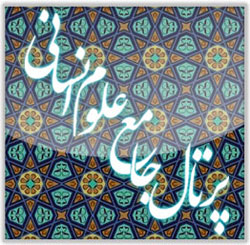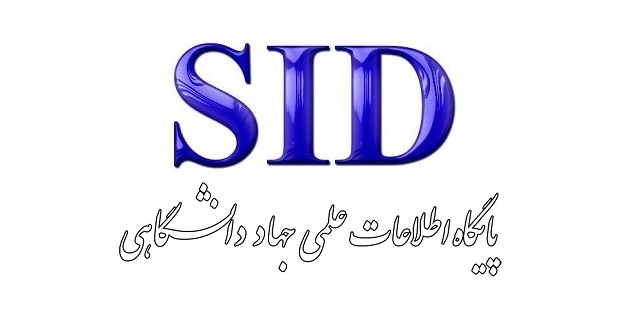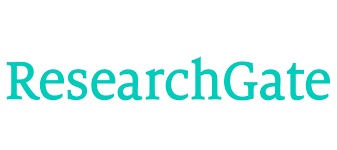اصول روانشناختی و تربیتی در تربیت نیروی انسانی کارآمد از منظر اسلام: طراحی یک الگوی جامع
کلمات کلیدی:
تربیت نیروی انسانی, اصول روانشناختی, کارآمدی, ویژگی های سیاسی, روش الگویی, واکنش مناسبچکیده
این پژوهش با هدف طراحی یک الگوی جامع و کاربردی برای تربیت نیروی انسانی کارآمد، با تکیه بر اصول روانشناختی و تربیتی برگرفته از آموزههای اسلامی، انجام شده است. رویکرد تحقیق، کیفی و مبتنی بر تحلیل محتوای قیاسی استوار بر منابع دینی و علمی معتبر میباشد. برای دستیابی به این هدف، محتوای آیات قرآن کریم، روایات معصومین (علیهم السلام) و متون علمی مرتبط با تربیت نیروی انسانی به دقت مورد بررسی و تحلیل قرار گرفته است. روش نمونهگیری هدفمند و جمعآوری اطلاعات از طریق روش فیشبرداری دقیق صورت پذیرفته است. تحلیل دادهها با استفاده از روش کدگذاری موضوعی سه مرحلهای (باز، محوری و گزینشی) و نظام مقولهبندی قیاسی انجام شده است. برای حصول اطمینان از اعتبار یافتهها، از معیارهای باورپذیری و اطمینانپذیری استفاده گردیده است. نتایج تحقیق نشان میدهد که الگوی تربیت نیروی انسانی کارآمد از منظر نظام تربیتی اسلام، بر پایههای سهگانه ویژگیهای فردی، اجتماعی و سیاسی استوار است. این الگو از ترکیب حدود ۲۰۴ مفهوم اولیه که در قالب ۱۶ مقوله محوری دستهبندی شدهاند، استخراج گردیده است. این مولفهها عبارتند از: ۱- معرفت دینی و آگاهی، ۲- خلاقیت و دانایی در حوزه کاری، ۳- شایستگی، ۴- کارآمدی در مدیریت، ۵- شجاعت، ۶- قاطعیت، ۷- فروتنی و پرهیز از تکبر، ۸- ایمان و اعتقاد به هدف، ۹- رعایت امانت در مسئولیت، ۱۰- گذشته پاک و نداشتن سوء رفتار، ۱۱- عدالتخواهی اجتماعی، ۱۲- تعامل اجتماعی با افراد اهل فکر، ۱۳- درک شرایط جامعه و تحمل سختیها، ۱۴- مسئولیتپذیری و پیشگامی در عمل، ۱۵- سادهزیستی و الگو بودن، ۱۶- بینش و دانش سیاسی و ترسیم خطوط کلی سیاست حاکم. علاوه بر این، پژوهش حاضر، شیوههای تربیتی اثربخش را نیز بر اساس آموزههای اسلامی شناسایی کرده است. این شیوهها که از ترکیب حدود ۹۰ مفهوم اولیه در قالب ۱۴ مقوله محوری به دست آمدهاند، عبارتند از: ۱- واکنش موثر، ۲- عکسالعمل به موقع، ۳- پاداش، ۴- تشویق، ۵- واکنش قاطعانه، ۶- توبیخ، ۷- نظارت و کنترل (شامل نظارت آشکار، پنهان و مردمی)، ۸- مدارا کردن، ۹- صلابت و قاطعیت، ۱۰- الگوبرداری و ۱۱- الگوبرداری از سیره ائمه معصومین (علیهم السلام). در نهایت، الگوی پیشنهادی این پژوهش، تمامی مبانی تربیتی را پوشش داده و با بهکارگیری شیوههای تربیتی معرفی شده، زمینهساز شکوفایی و تربیت نیروی انسانی کارآمد و مؤمن در مربیان و معلمان خواهد بود.
دانلودها
مراجع
Abbasi, M. (2021). Human Resource Management in Efficient Organizations. University Publications. https://mohsenjorian.ir
Abd al-Hamid ibn Abi, a. H. (1993). Commentary on Nahj al-Balagha. Maktabat Ayatollah al-Udhma al-Mar’ashi al-Najafi.
Abd al-Malik Ibn, H. (1999). The Biography of the Prophet by Ibn Hisham. Dar al-Kitab al-Islamiya. https://journals.ekb.eg/article_231240_0.html
Aghabakhshi, A. (2018). Encyclopedia of Political Science. Chapar. https://www.gisoom.com/book
Ahmad ibn Abi Ya’qub, a. Y. q. (1993). The History of al-Ya’qubi. Dar al-Fikr.
Al-Bar'i, M., & Mawdud, R. (1993). A Review of Organizational Oversight and Evaluation of Organizational Behavior from the Islamic Perspective by Applying the Analytical Process. In An Approach to Management in Islam. Government Management Training Center. http://www.jmdp.ir/browse.php?a_id=537&sid=1&slc_lang=fa
Al-Radi, a.-S., & Ali Naqi Feyz, a.-I. (1987). Collection of Sayings and Sermons of Imam Ali. Feyz al-Islam Publications. https://al-islam.org
al-Raghib, a. I. (1995). Vocabulary in the Strange Words of the Quran. Dar al-Ilm al-Dar al-Shamiya. https://en.wikipedia.org/wiki/Al-Mufradat_fi_Gharib_al-Quran
Alizadeh, R. (2021). Communication Skills and their Impact on Group Efficiency. Journal Of Social Sciences, 10(4), 85-98. https://wir.fatemiyehshiraz.ac.ir/article_725749.html
Bandura, A. (1997). Self-efficacy Mechanism in Human Agency. American psychologist, 37IS - 2, 122-147. https://doi.org/10.1037//0003-066X.37.2.122
Delshad Tehrani, M. (2000). The Government of Wisdom; Governance in Nahj al-Balagha. Darya. https://noorlib.ir/book
Fathi, N. (2020). Evaluation and Feedback in Human Resource Performance. Journal of Educational Management, 9(1), 50-65. https://ciu.nahad.ir/
Hakimi, M., Hakimi, M. R., Hakimi, A., & Ahmad, A. (2016). Life. Dalil-e Ma Publications. https://www.gisoom.com/book
Hosseini, M. (2021). Educational Models and their Impact on Efficient Human Resources. Educational Research Journal, 5(2), 55-70. https://civilica.com/doc/1672929/
Ibn Maytham, a. B. (1996). Commentary on Nahj al-Balagha. Astan Quds Razavi.
Izz al-Din Ibn, a. A. (1994). The Lions of the Forest in the Knowledge of the Companions. Dar al-Kitab al-Islamiya. https://www.neliti.com/
Kamijani, D. (2015). Familiarity with the Structure of Religious Education and Strategies for Accepting It in Childhood. Educational Teachings in the Quran and Hadith, 1(2). https://iued.ilam.ac.ir/article_18112.html
Khoei, M. H. A. (2018). The Path of Excellence in the Commentary on Nahj al-Balagha. Maktabat al-Islamiya.
Luthans, F. (2002). Positive organizational behavior: developing and managing psychological strengths. Academy of Management Executive, 16(1). https://doi.org/10.5465/ame.2002.6640181
Mahmudi, S. (2020). Theories of Motivation and its Impact on Performance. Journal of Educational Management, 15(2), 45-60. https://www.sid.ir/paper
Majlisi, M. T. (2017). Seas of Lights. Maktabat al-Islamiyya. https://www.themathesontrust.org/
Marvati, S. (2015). The Educational Origin of Tolerance in the Holy Quran and the Biography of the Infallibles. Educational Teachings in the Quran and Hadith, 1(2). https://iued.ilam.ac.ir/article_18116.html
Mohammadi, P. (2022). Effective Leadership and its Impact on Team Motivation. Leadership Research, 6(3), 77-89. https://scholar.google.com
Mortazavi, S. Z. (2015). The Efficiency of the Islamic Republic System. Islamic Government Journal, 14. https://jou.spsiran.ir/
Motahari, M. (1988). Collected Works. Sadra Publications. https://motahari.org
Mu'in, M. (2005). Persian Dictionary. Amir Kabir. https://denabooks.com
Muhammad Baqir, a. M. (2017). Bihar al-Anwar. Maktabat al-Islamiyya. https://traditionalhikma.com/
Muhammad ibn Jarir, a. T. (1999). The History of al-Tabari. Dar al-Kitab al-Ilmiyya. https://www.kalamullah.com/tabari.html
Nasrabadi, A. (2018). The Importance and Position of Human Resources in Islam. Huson Journal, 25. https://hawzah.net
Qadi al-Nu’man, a. M. (1995). The Pillars of Islam. Dar al-Ma’arif. https://en.wikipedia.org/wiki/Da%27a%27im_al-Islam
Rezaei, F. (2019). Principles of Learning and Training Efficient Human Resources. Journal of Educational Psychology VL - 12(3), 90-102. https://miu.nahad.ir
Sahar-khan, S. (2016). A Glimpse into the Life of Imam Reza (AS). Quranic Garden Magazine, 106. http://islamicblessings.com
Sattari, A. (2020). Individual Characteristics and their Impact on Human Resource Efficiency. Journal of Human Resource Management, 8(1), 34-47. https://www.researchgate.net
Shamkhi, M. (2015). The Impact of Quranic Education on the Crystallization of Human Perfection. Educational Teachings in the Quran and Hadith, 1(2). https://iued.ilam.ac.ir/article_18115.html?lang=en
Shariati, S. S. a.-D. (2012). A Review of the Word Education in the Quran and Sunnah. Educational Psychology, 8(23). https://jep.atu.ac.ir/article_2298.html
Shushtari, M. T. (1997). Dictionary of Men. Islamic Publication Office. https://en-eslami.ir
Tabataba'i, S. M. H., & Muhammad Baqir Musavi, H. (1989). Tafsir al-Mizan. Society of Seminary Teachers. https://archive.org/details/al-mizan-tabatabai-vols1-13
Whetten, D. A., & Cameron, K. s. (2015). Developing management skills. Addison - Wesley wheelan. https://cmls-global.com/
Zahidi, S. a.-S. (2013). Comprehensive Management Encyclopedia. Chap-e Sepehr. https://book.atu.ac.ir/book_109.html
دانلود
چاپ شده
ارسال
بازنگری
پذیرش
شماره
نوع مقاله
مجوز
حق نشر 2025 حسین غلام پور (نویسنده); علی اصغر ماشینچی; مختار رنجبر (نویسنده)

این پروژه تحت مجوز بین المللی Creative Commons Attribution-NonCommercial 4.0 می باشد.









